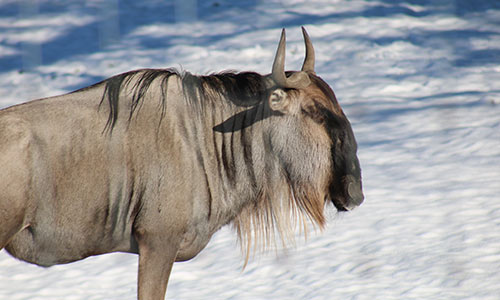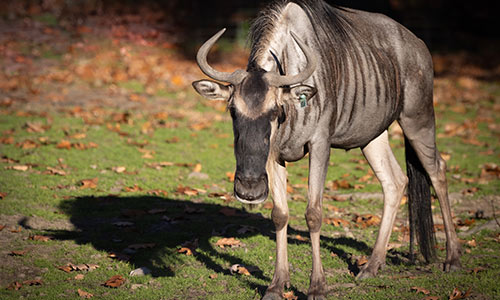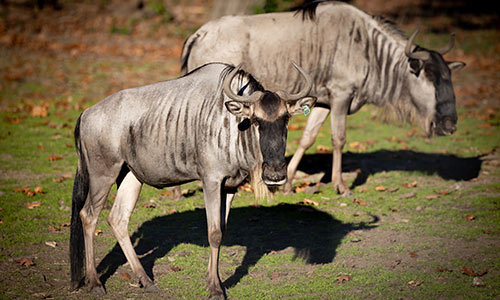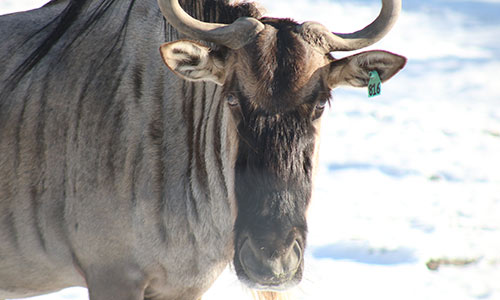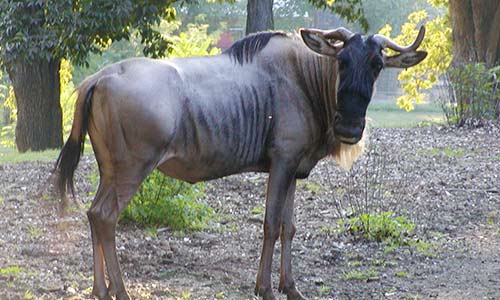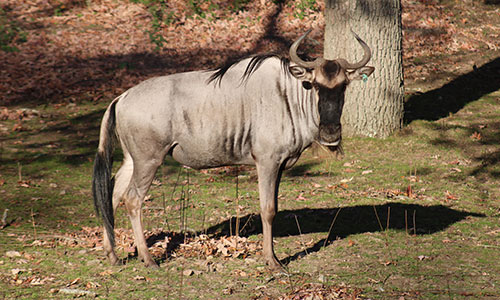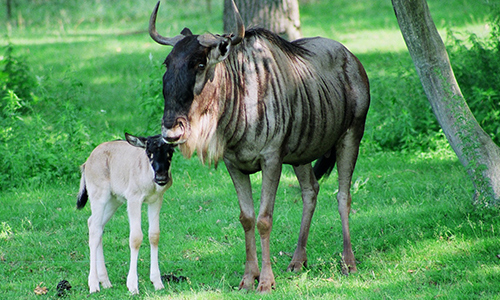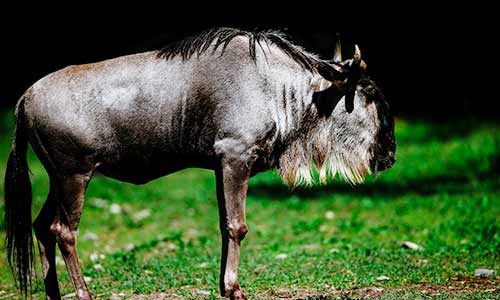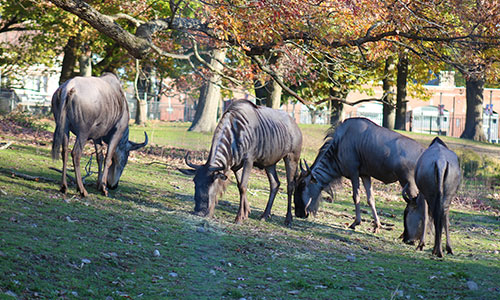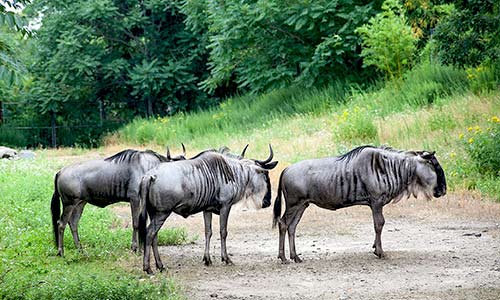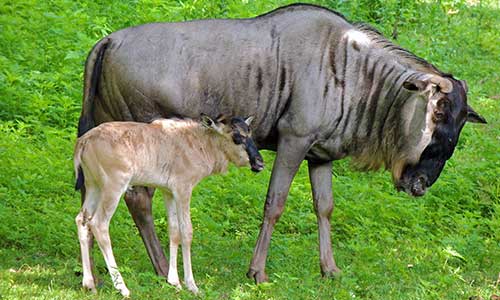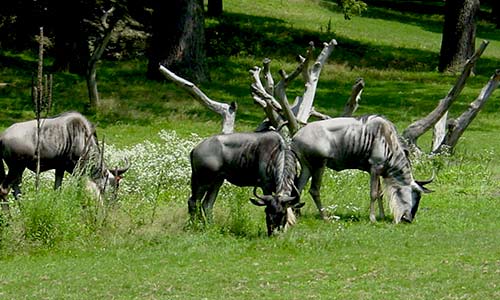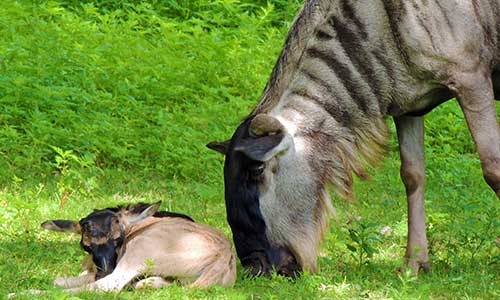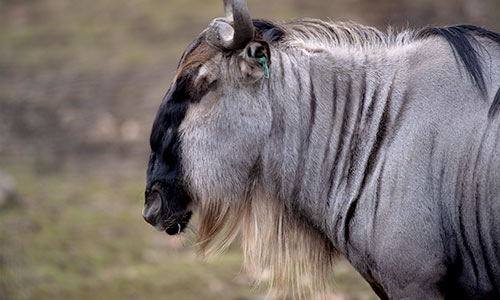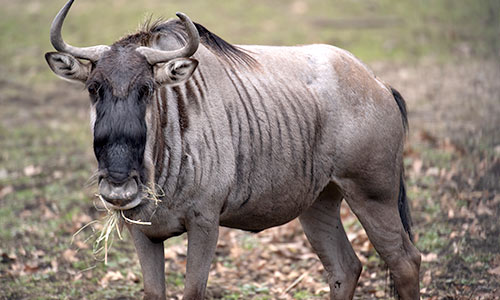White-Bearded Wildebeest
Connochaetes taurinus albojubatus
About the White-Bearded Wildebeest

Geographic Range:
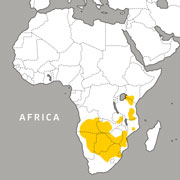
Class: Mammalia
Order: Artiodactyla
Family: Bovidae
Genus: Connochaetes
Species: taurinus
Subspecies: albojubatus
The white-bearded wildebeest is a large antelope, and true to its name, the only wildebeest species with a white beard. Found in central Kenya and Northern Tanzania, wildebeest live in herds that can number up to one million when they're searching for food. This migration can be followed by up to half a million zebras and Thomson's gazelles. It’s not always safe, however-- herds of over 500 wildebeest have been known to stampede at speeds of over 50 miles per hour.
Wildebeest Facts
Appearance:
The white-bearded wildebeest is a large antelope with large shoulders and disproportionately smaller hindquarters. They are a grayish brown and, unlike other species of wildebeest, have a white beard. They have slim legs and a large head. Both genders have horns, though the females have slimmer horns.
Size:
Weight: 300 to 600 pounds
Height: Up to 4 feet 7 inches at the shoulder.
Diet:
White-bearded wildebeest eat short grasses but will eat taller grasses in the dry season.
Reproduction:
White-bearded wildebeest mating occurs in June and July.
Gestation:
After a gestation period of 240 to 255 days, a single calf is born. Unlike other antelope, the wildebeest does not find a secluded spot to give birth. Eighty percent of all calves are born within the first two to three weeks of the wet season (February and March) to overwhelm potential predators. Calves are able to run within three to seven minutes after birth and begin eating grass when 10 days old, although they still suckle for up to six months. Male sexual maturity is reached after three to four years. Female sexual maturity is reached after 2.5 years.
Behavior:
Male white-bearded wildebeest leave the herd when mature and form bachelor groups before eventually establishing a territory. Females generally remain with the herd. When searching for food, wildebeest may amass a large migration herd of up to 1 million individuals. Up to half a million zebras and Thomson's gazelles can follow the great wildebeest migration.
Habitat/Range:
White-bearded wildebeest live in a wide variety of habitats including short grass plains, woodlands, and at the edge of savannahs and open bushland. They range throughout central Kenya and northern Tanzania.
Median Life Expectancy:
Males: 8.3 years
Females: 14 years
Threats:
White-bearded wildebeest are a species of Least Concern.
Wildebeest need to stay indoors and off exhibit if it’s 32 degrees or below and/or icy. Visit our Winter Visits page to learn more about the amazing animals you can see during the winter.
You Can Find This Animal in the Serengeti Crossing
Survival Strategy
To protect themselves from the many predators of the African grasslands (lions, hyenas and wild dogs), wildebeest form large herds of up to several thousand individuals. During dry seasons, these large herds migrate dozens of miles in a single day to find greener pastures in which to graze.
You might also like
At Franklin Park Zoo:
At Stone Zoo:

